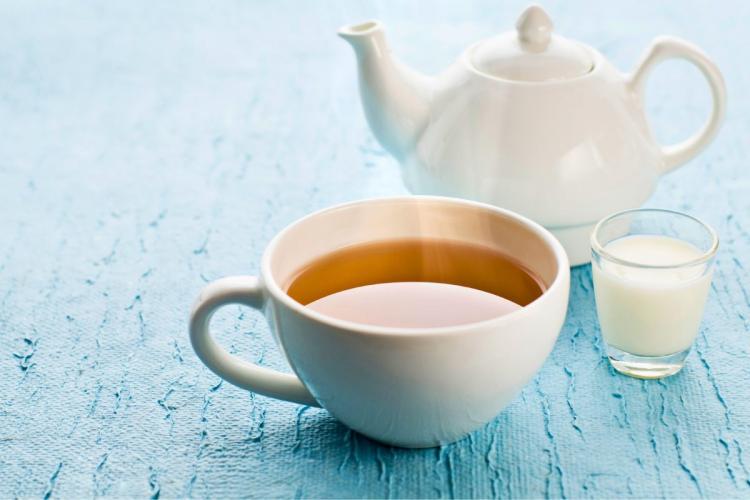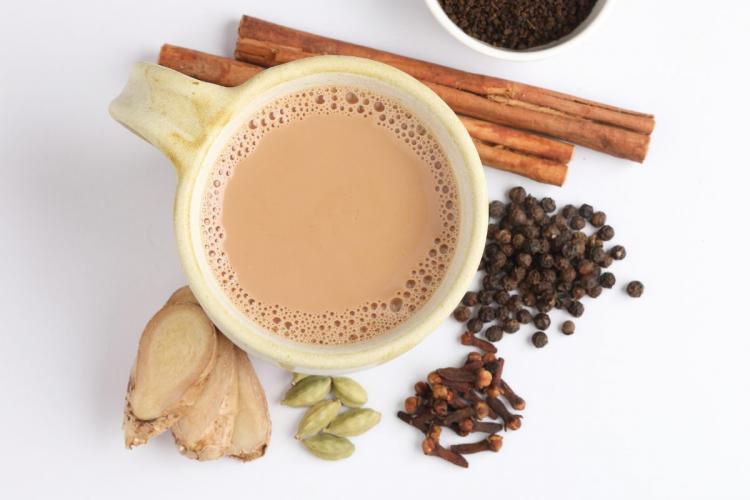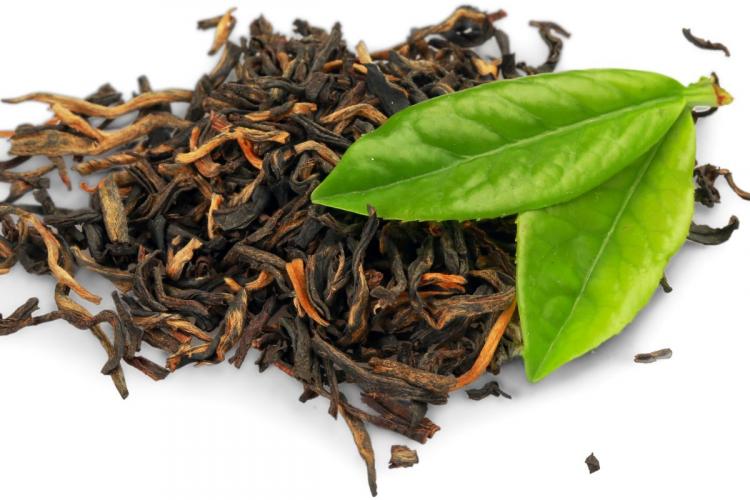Explore every tea type
A flavorful journey through camellia sinensis varieties.
Are you browsing for a specific ‘tea type’ to enhance your collection or daily routine? This article simplifies the complex world of teas. Learn what distinguishes green, black, oolong, and white teas in flavor, origin, and brewing methods. Whether you’re a connoisseur or a casual sipper, discover how each tea type can fit into your lifestyle and possibly impact your health, all while enjoying the nuances of their distinct tastes.
Types of tea
- The Camellia Sinensis plant is the source of all true teas; the various types—black, green, oolong, and others—are the result of diverse growing conditions and processing methods, including levels of oxidation.
- Tea comes in a wide range of flavors and complexities—from the robust and caffeinated black teas to the delicate and subtle white teas—with additional categories like pu-erh and specialty teas offering unique brewing and aging processes.
- Tea’s cultural importance, storage practices, caffeine content, and health benefits vary widely across different tea types and cultural traditions, reflecting tea’s global significance and versatility as both a beverage and a wellness contributor.
Exploring the world of camellia sinensis
The camellia sinensis plant is the cornerstone of an age-old beverage revered across continents. Originating from the verdant Yunnan mountains in Western China, this humble evergreen shrub has traversed the globe, sprouting into a multitude of cultivars each with its own story. With varieties like the diminutive Sinensis and the taller Assamica, it’s fascinating to consider how these leaves, once reserved for medicinal purposes, now fill our cups with recreational delight.
The secret lies in the tender young leaves of the plant, which, through diverse processing methods, transform into the black, green, oolong, and other teas we cherish.
The tea plant and its global journey
Imagine the Camellia Sinensis as a traveler, its seeds carried on the winds of trade and exploration from ancient China to the far corners of the earth. Its journey is a tale of adaptation and cultivation, with two principal varieties – the Chinese small-leaf type and the large-leaved Assamese – diverging genetically over 22,000 years ago.
These plants found new homes in the tea gardens of India, propelled by the British in their quest to rival China’s tea monopoly. Pruned to waist height for ease of plucking, the tea plant’s delicate tips and first few leaves are harvested, laying the foundation for a global beverage phenomenon.
From fresh tea leaves to your cup
The transformation from fresh tea leaves to the comforting brew in your cup is an art as old as time. Oxidation is the maestro in this symphony, guiding the creation of each tea’s unique profile. While green teas are celebrated for their minimal oxidation and milder flavors, black teas undergo a dance of full oxidization, bringing forth bold and rich hues.
Oolong teas, known as partially oxidized tea, are the artisans of the tea world, with leaves often rolled to release enzymes that imbue them with distinctive aromas and tastes. Each step, from the ‘low and slow’ withering to the precise heating methods, is a deliberate stroke on the canvas of tea manufacturing.
Unveiling the spectrum of tea types
Stepping into the spectrum of types of tea is akin to entering a kaleidoscope of flavors, aromas, and colors. With seven primary categories to explore, including:
- Black tea
- Green tea
- White tea
- Oolong tea
- Pu-erh tea
- Purple tea
- Herbal infusions
Every tea enthusiast can find their perfect match.
Black tea, robust and commonly enjoyed, offers a spectrum of flavors from the malty richness of Assam to the floral delicacy of Darjeeling. Green teas, with their diverse palette, range from spicy to floral, embodying the art of preservation through their careful heat treatment.
Black teas are bold and robust
The world of black teas is a testament to the rich history and diverse cultures that have shaped its many forms. Defined by a process of heavy oxidation, black teas like:
- the malty Assam and floral Darjeeling from India
- the citrusy to chocolaty Ceylon from Sri Lanka
- the smoky notes of China’s Lapsang Souchong
- the sweet fragrance of Earl Grey
Black teas are not just beverages but experiences that awaken the senses.
With a caffeine content that rivals the morning coffee, black tea serves as a global morning ritual, uniting tea drinkers in a shared moment of awakening.
Green teas are delicate and refreshing
Delicate and refreshing, green teas are the embodiment of tea’s gentler side. Some popular varieties include:
- Sencha: a Japanese green tea with a grassy flavor
- Matcha: a powdered green tea that is whisked into a creamy, umami-rich beverage
- Dragonwell: a Chinese green tea with chestnut hints
- Biluochun: a Chinese green tea with fruity aromas
These teas have their own unique flavors and characteristics, making them a delightful choice for tea lovers.
Beyond their subtle flavors, green teas are health elixirs, with the potential to bolster immunity, protect against disease, and promote overall wellbeing, thanks to the powerful catechins like EGCG found within green tea leaves.
Oolong teas stand in the artful middle ground
Oolong teas, with their partial oxidation, lie in the artful middle ground between the gentle caress of green teas and the assertive embrace of black teas. The meticulous process of rubbing the leaves, a tradition rich in craftsmanship, imparts to oolong teas a spectrum of flavors from sweet to floral, as seen in famous varieties like Tie Guan Yin and Da Hong Pao. These teas are not only revered for their taste but also for their re-infusability, offering a journey of flavors that evolve with each subsequent steeping, making them a favorite among those who appreciate the subtle shifts in a tea’s character.
Specialty tea types mean going beyond the basics
Venturing beyond the basics, the world of specialty teas offers a treasure trove of rare gems like:
- Yellow tea
- The pure simplicity of white teas
- The time-honored pu-erh
- The visually striking butterfly pea flower tea
- The culturally significant mate tea
Each specialty tea carries its own unique story and preparation method, providing a glimpse into the diverse practices and tastes that define the global tea landscape.
Yellow tea is the rare gem
Yellow tea, a rarity within the tea world, is a partially fermented treasure from China, boasting a mild taste that whispers rather than shouts. Its sweet and nutty profile is delicately laced with floral notes, offering a sip of understated elegance that sets it apart from its more commonly known counterparts.
White teas are pure and simple elegance
White teas represent the purest essence of the Camellia Sinensis plant, their production a testament to simplicity as the young buds and leaves are swiftly dried with minimal oxidation. Varieties like Silver Needle and White Peony, hailing from regions as diverse as Fujian, Darjeeling, and Sri Lanka, capture the light, delicate flavors that are the hallmark of white teas.
With a lower caffeine content, white teas offer a serene moment of respite, their subtle flavors an invitation to slow down and savor the moment.
Pu erh tea is aged to perfection
Pu-erh tea, with origins in China’s Yunnan Province, is akin to a fine wine, improving with age and revealing deeper complexities over time. The post-fermentation process, unique to pu-erh, imparts a rich, earthy taste that mellows into smoothness, with ripe varieties offering woody and nutty notes.
This tea’s journey begins with traditional processing, followed by an aging period that allows its flavors to unfold gracefully.
Masala chai is spiced tea for the soul
Masala chai, the soulful spiced tea of India, is a symphony of flavors, blending black tea with milk, sugar, and a medley of spices that warm the heart and awaken the spirit. The recipe for masala chai is as varied as the people who brew it, with each household boasting its own secret blend of spices. Some common spices used in masala chai include:
- Ginger
- Cinnamon
- Cardamom
- Cloves
- Black pepper
- Star anise
- Nutmeg
Each sip of masala chai is a journey through the rich tapestry of Indian culture.
Herbal infusions are naturally caffeine-free alternatives
Herbal infusions, or tisanes, are a sanctuary for those seeking solace from the caffeine-laden world of traditional teas. These beverages, also known as herbal tea, are steeped from herbs, spices, and plant materials, offering a tapestry of flavors that range from the soothing chamomile to the tangy hibiscus, each blend a caffeine-free delight for the senses. With a variety of herbal teas to choose from, there’s a perfect blend for everyone.
Rooibos tea from the African red bush
Rooibos tea, or red bush tea, heralds from South Africa, its unique flavor profile a celebration of the Aspalathus linearis shrub from which it is harvested. The process of bruising, fermenting, and sun-drying the leaves cultivates a beverage that is not only naturally caffeine-free but also recognized for its safety and rarity of side effects.
Tips to preserve freshness when storing your tea collection
The essence of a good tea lies not just in its brewing but also in its storage. To preserve the integrity of your tea collection, it is crucial to store your tea in an airtight, opaque container away from any light, heat, or moisture, thus maintaining its freshness and extending its shelf life. While loose leaf tea can remain fresh for several months, even up to a year in the right conditions, tea bags should be kept in a similarly dry and airtight environment to prevent flavor absorption from their surroundings.
Remember, tea’s quality may wane over time, but when stored correctly, it remains a robust and enjoyable staple in your pantry.
Decoding tea labels from loose leaf tea vs tea bags
When it comes to tea, the choice between loose leaf and tea bags is more than just a matter of convenience; it’s a decision that affects the flavor, quality, and environmental impact of your brew. Loose leaf tea, with its whole leaves, provides a complexity and depth of flavor that bagged counterparts often lack due to their finer, lower-quality particles.
While tea bags offer the ease of a quick steep, loose leaf tea invites a more mindful, eco-friendly sipping experience, often at a greater value due to its re-steepable nature.
Brewing basics include how to steep each type of tea
Mastering the perfect cup of tea is an art that begins with water temperature. Each type of tea, from the robust black to the delicate white, has its ideal heat range that, when honored, unlocks the essence of its flavor. The steeping time is equally crucial, influencing not only the taste but also the caffeine content extracted, with longer durations drawing out the tea’s full potential.
Sipping your way to wellbeing
Tea isn’t just a beverage—it’s a vessel for health. Green tea, for instance, is a powerful ally in the fight against free radicals, reducing the risk of certain cancers, while rooibos tea’s antioxidants, such as aspalathin and quercetin, help protect cells from oxidative damage. Rooibos tea, in particular, holds promise for heart health by inhibiting enzymes that may contribute to cardiovascular disease and by improving cholesterol levels.
Additionally, animal studies have shown that specific antioxidants in rooibos tea can help balance blood sugar and improve insulin resistance, offering a beacon of hope for individuals with diabetes. From oolong tea’s digestive and pulmonary benefits to white tea’s immune and antiviral properties, the health benefits of tea span a wide spectrum, making each cup a step towards better wellbeing.
Caffeine in tea and what every tea drinker should know
Tea drinkers often navigate the landscape of caffeine content when selecting their preferred brew. Here are some key points to consider:
- Green tea offers a modest boost of caffeine.
- Black tea provides a more substantial energizing effect.
- Factors such as steeping temperature and duration can influence the caffeine levels, particularly in green and oolong teas.
- This allows drinkers to tailor their tea experience to their personal needs.
Tea culture around the world
The cultural significance of tea stretches across the globe, each region steeping its own traditions into this ancient elixir. In Japan, the tea ceremony, or chanoyu, reflects the nation’s values of harmony, respect, purity, and tranquility, a practice that has been honed over centuries. The ceremony, with its multitude of schools and styles, takes place in serene tea houses, providing a space for reflection and social connection.
Meanwhile, China’s tea culture is rooted in the philosophical and communal aspects of the practice, with tea house gatherings serving as a hub for intellectual and social interaction. As the contemporary tea landscape evolves, these traditions adapt, blending the reverence of the past with the innovations of the present, ensuring that the ritual of tea drinking remains a vibrant and vital part of life in these countries.
From the camellia sinensis plant
As we conclude this flavorful journey through the world of tea, it’s clear that this beloved beverage is much more than just a simple refreshment. It’s a link to ancient traditions, a catalyst for health and wellness, and a source of infinite variety and pleasure. Whether it’s the robust profile of a black tea, the subtle elegance of a white tea, or the soothing embrace of an herbal infusion, there’s a tea to suit every taste, moment, and purpose. So the next time you steep a cup, remember the incredible journey from leaf to cup, and may your tea-drinking experience be as rich and fulfilling as the history it represents.
What are the 6 main types of tea?
White, green, yellow, oolong, black, and pu-erh are the six main types of tea. Also, herbal infusions can be made from non-tea plants.
How many kind of teas are there?
There are over 3000 varieties of tea, each with its own specific characteristics, offering a wide range of choices for tea enthusiasts.
What differentiates the various types of tea like green, black, and oolong?
The primary difference between green, black, and oolong tea lies in their oxidation process. Green tea is lightly oxidized, oolong tea is partially oxidized, and black tea is fully oxidized, resulting in distinct flavors and brews.
How can I enhance the longevity of my tea's freshness?
To enhance the longevity of your tea's freshness, store it in an airtight, opaque container away from heat, light, and moisture, ensuring that loose leaf tea is kept in a resealable bag or durable tin for up to a year, while tea bags need a dry, airtight container to prevent flavor absorption.
Are there any health benefits associated with drinking tea?
Yes, drinking tea can provide health benefits such as reducing the risk of certain cancers, supporting heart health, and potentially aiding in blood sugar regulation and insulin resistance. These benefits are linked to the antioxidants present in tea.



